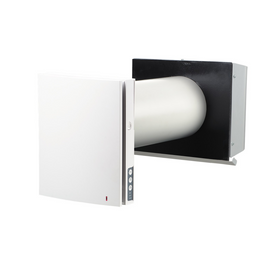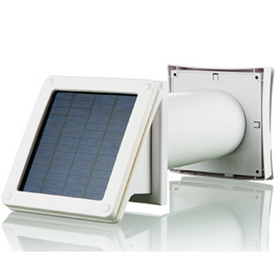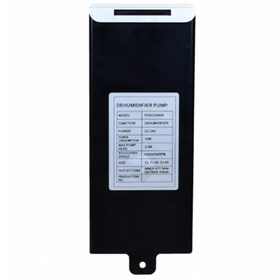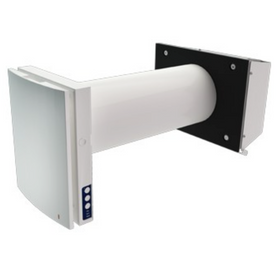
Radon Gas: What Is It and How to Test for It at Home
Last Updated: Feb 26, 2025Radon is a colorless and odorless radioactive gas that's present in soil. It forms naturally from the decaying process of uranium in soil and rocks. The last time you may have heard about radon is in science class, where you studied the periodic table of the elements. Well, it's everywhere, and it's a pretty nasty carcinogen that is a leading environmental cause of lung cancer.
Table of Contents
- Is Radon Bad For Me and My Family's Health?
- How Does Radon Get Into My Home?
- What Level of Radon Requires Mitigation?
- Radon Detectors and Testing
- What Are Recommended Radon Testing Products?
- Hiring a Radon Expert
- How Can Radon Be Removed From Your Home?

Is Radon Bad For Me and My Family's Health?
When this gas is inhaled into your lungs, the radioactive particles attach to lung tissue, damaging the cells as the particles release energy. When the cells become damaged, your body naturally attempts to repair itself, increasing cancer risk. According to Canada's Government, the lifetime lung cancer risk when exposed to radon's high levels is one in twenty. For active tobacco smokers, the risk increases to one in three compared to those who are only lifelong smokers and not exposed to radon, which is one in ten. Since the severity of exposure impacts cancer risk, homes and other enclosed spaces could present a radon risk to you and your family if not addressed.

How Does Radon Get Into My Home?
Radon can enter a home through cracks in a home's foundation, openings in concrete slabs, stone or brick, floor-wall joins, drainage or service pipes, window casements, wall joints, sump pumps, and well water. In these cases, gases will enter your home because the air pressure inside is lower than that of the surrounding soil.

What Level of Radon Requires Mitigation?
Radon gas is generally measured in Becquerels per cubic meter (Bq/m3). In the US, radon is measured in picocuries per liter (pCi/L). In 2009, the World Health Organization established policies to reduce health risks associated with radon. The WHO suggests that the annual average concentration level of radon should not exceed 100 Bq/m3. The level of radon can differ geographically and should never exceed 300 Bq/m3. With this, each nation sets individual guidelines. For instance, Canadian guidelines suggest that radon concentrations stay below 200 Bq/m3. They also suggest that testing be conducted through long term tests for a minimum of three months. The US EPA has set an "action level" for radon in homes at four pCi/L, equivalent to 148 Bq/m3.
Amendments to building codes have been implemented in North America and Europe to reduce radon levels when renovating and building new homes. However, it is still the homeowner's responsibility to test for and detect potential radon issues to ensure their home is at or below the acceptable level.
Radon Detectors and Testing
There are many products available on the market today to ensure your home is safe from radon-related health concerns. To test, you will want to ensure that all doors, windows, and vents are closed for 12-24 hours before testing (you may still come and go from your home as you please during this period). Most testing kits are designed to measure exposure between 24 and 168 hours (1 to 7 days) and require a relative indoor humidity of 50% or less. It is important to read your product's manual in its entirety to ensure you are correctly using your testing device. You may also come across several low-priced testing kits around $20. However, they often require you to mail the test results, pay a lab fee and have very mixed reviews.
What Are Recommended Radon Testing Products?
There are many options for radon testing at home. Below we will explore three different options to help you make a decision based on your home's specific needs. They are:
- The Airthings Wave Plus smart indoor air quality monitor
- The Safety Siren Pro Series 4 Radon Gas Detector, and
- The AccuStar Alpha Track Long Term Radon Test

Airthings Wave Plus Smart Indoor Air Quality Monitor
Airthings Wave connects to your home's Wi-Fi network and provides information via their online platform and free smartphone and tablet app. It monitors six indoor air quality factors, including radon, carbon dioxide, total volatile organic compounds (TVOCs), humidity, temperature, and air pressure. You can also wave your hand over the device to receive a visual, color-coded notification. The app also provides notifications of updates, data, and low battery power. So, these features ensure your device is always on and keeps you and your family safe from high levels of radon exposure. Airthings recommends allowing it to run for one week to collect enough data to get an accurate radon reading.
The Airthings Wave Plus is available for $229 in the US and $299 in Canada directly from Airthings.
Ventilation & Air
Find a wide variety of researched and vetted home improvement products that help address your home's ventilation and air quality needs.

Vents TwinFresh Comfo RA1-50-2 Ductless Energy Recovery Ventilator
Vents
In Stock

Vents TwinFresh Expert RA1-50-2 Ductless Energy Recovery Ventilator
Vents
In Stock

Santa Fe Compact70 Dehumidifier - 4044110
Santa Fe
In Stock

Santa Fe UltraMD33 In-Wall Dehumidifier - 4044610
Santa Fe
Out of Stock

Innovative Dehumidifier IW25-5 In-Wall Dehumidifier
Innovative Dehumidifier
In Stock

Vents Solar Powered Ductless Fresh Air Wall Vent PSS 102
Vents
In Stock

AlorAir Sentinel HD55 Blue 113 Pint Commercial-Residential Dehumidifier
AlorAir
In Stock

Innovative Dehumidifier Condensate Pump for IW25-5 In-Wall Dehumidifier
Innovative Dehumidifier
In Stock

Vents TwinFresh Expert RW1-85-2 V.2 Ductless Energy Recovery Ventilator
Vents
In Stock

Santa Fe Small Hanging Kit - 4036695
Santa Fe
In Stock

Safety Siren Pro Series 4 Radon Gas Detector
Safety Siren offers another continuous gas monitoring device that monitors both short-term and long-term radon levels. Homeowners can switch between short-term and long-term monitoring via the menu button on the device—your home's 120-volt outlet powers the Safety Siren. The device is easy to use and has a visual numeric LED display indicating radon's level in your home, and displays hourly updates. The Safety Siren also self-tests every 24 hours and will visually display any errors that it may detect. You can order a Safety Siren monitor from Sylvane for $199USD, or you can pick one up at various retailers for around $230 in the US and $279 in Canada.

AccuStar Alpha Track Long Term Radon Test
Long-term radon tests, like those recommended by Health Canada, provide a picture of the radon levels in your home over time. Tests like this one, by AccuStar, purchased for $35 from the New Brunswick Lung Association, are meant to be used for a period of three months to one year. The cost includes the lab analysis, which you simply send away for, in the supplied envelope when you complete the testing period.
Hiring a Radon Expert
If you test higher than the accepted levels mentioned above, a certified radon mitigation professional can help. They can assist with solutions that will reduce radon levels in your home. Remember, high levels of radon can be mitigated in any home. The cost of mitigating radon in your home can vary. Most mitigation jobs range between $300-$5,000, depending on the work required.

How Can Radon Be Removed From Your Home?
There are many radon mitigation strategies. Some can be DIY, and some require professional help.
- Seal any areas where air can pass through the basement slab - at wall joints, around pipes and sump pumps, and any cracks you can find.
- Have a professional install piping from underneath your basement slab with a fan that vents under-slab gasses directly out the side or the roof of your home. This method is called Active Sub-Slab Depressurization.
- Apply a radon sealing product, like RadonSeal, that you or a professional can coat your basement's concrete slab with.
- Consider installing an HRV or ERV in the basement so that you have a constant source of fresh air. This method can reduce radon in your home by 25 to 50% but doesn't eliminate the problem's source.
Rise
At Rise, we strive to make sustainable home improvement easy and accessible for everyone. Whether you're building or renovating, our thoroughly vetted building products will help you reduce your carbon footprint, lower energy costs, and create a more sustainable living or working environment.
